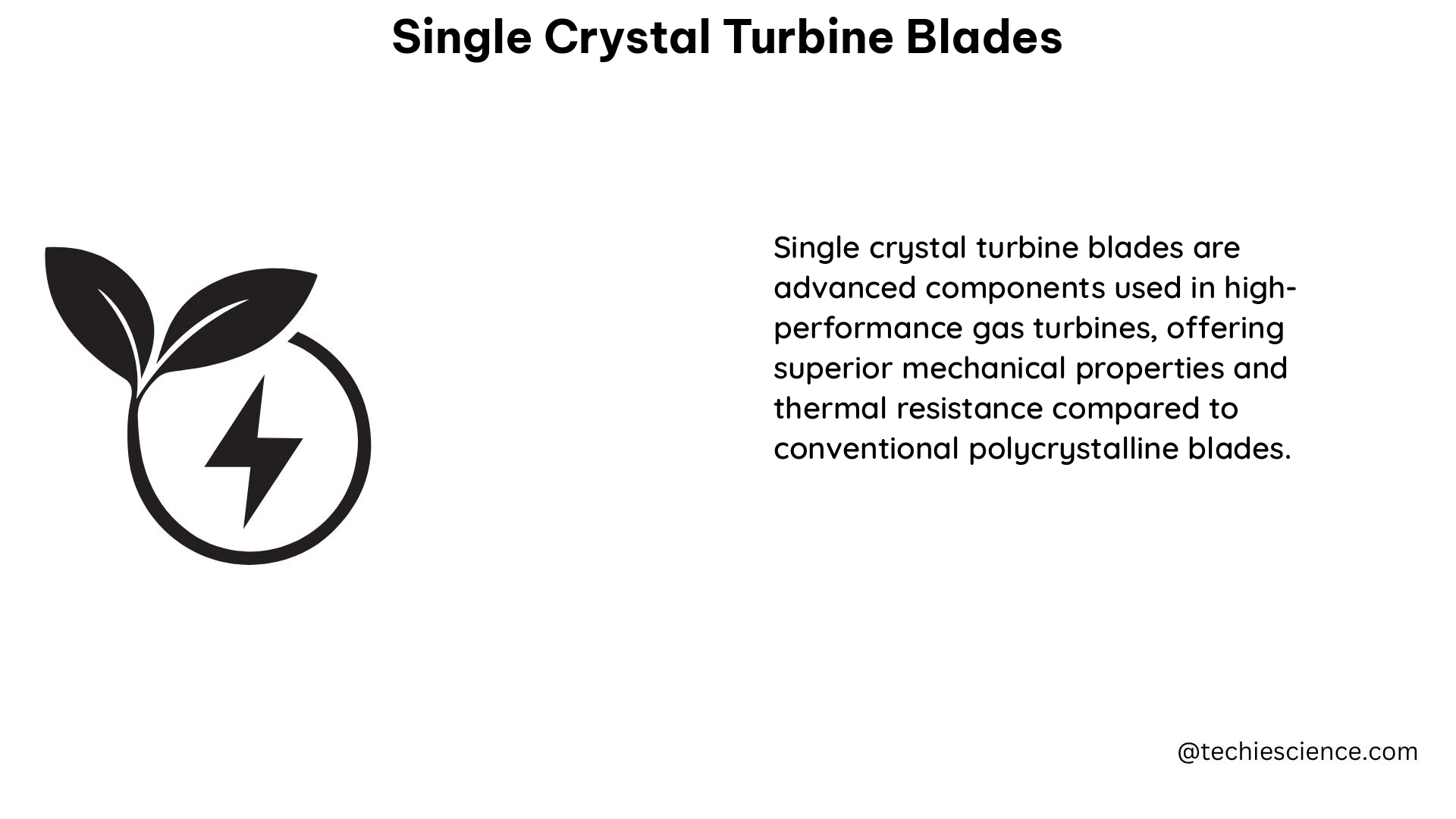Single crystal turbine blades are a critical component in high-performance gas turbines, operating in harsh environments with high temperatures and pressures. These blades are made from superalloys and are designed to have a single crystal structure, which provides improved mechanical properties and resistance to creep and fatigue compared to polycrystalline blades.
Understanding Single Crystal Turbine Blades
Single crystal turbine blades are manufactured using a specialized casting process that allows for the formation of a single, continuous crystal structure throughout the blade. This unique structure offers several advantages over traditional polycrystalline blades:
-
Improved Mechanical Properties: The single crystal structure eliminates grain boundaries, which are weak points in polycrystalline materials. This results in higher tensile strength, yield strength, and creep resistance, allowing the blades to withstand the extreme operating conditions of gas turbines.
-
Enhanced Fatigue Life: The absence of grain boundaries in single crystal blades reduces the initiation and propagation of fatigue cracks, leading to a significantly longer fatigue life compared to polycrystalline blades.
-
Increased Thermal Efficiency: The improved mechanical properties of single crystal blades enable the use of higher turbine inlet temperatures, which in turn increases the thermal efficiency of the gas turbine.
Characterizing Single Crystal Turbine Blades

To ensure the safe and efficient operation of single crystal turbine blades, it is essential to accurately characterize their properties and performance. This can be achieved through various measurements and analyses:
Dimensional Measurements
- Blade Length: Typically ranging from 50 to 150 mm, depending on the turbine design.
- Blade Width: Varies from 20 to 50 mm, with the width tapering towards the tip.
- Blade Thickness: Ranges from 2 to 6 mm, with the thickest section near the root.
Material Properties
- Elastic Modulus: Superalloys used for single crystal turbine blades typically have an elastic modulus between 200 and 250 GPa.
- Yield Strength: The yield strength of single crystal superalloys can range from 800 to 1200 MPa, depending on the alloy composition and heat treatment.
- Creep Rupture Strength: Single crystal turbine blades exhibit superior creep resistance, with creep rupture strengths ranging from 500 to 800 MPa at operating temperatures.
Crystal Orientation
- Crystallographic Indices: The crystal orientation of single crystal turbine blades is often quantified using the [001] direction, which is aligned with the blade axis for improved mechanical properties.
- Misorientation Angle: The deviation of the actual crystal orientation from the desired [001] alignment is typically less than 10 degrees.
Performance Characteristics
- Heat Transfer: Blade-to-coolant heat transfer data can be obtained through experiments with natural-convection water-cooled turbines, and convective coefficients can be correlated using the general relation for natural-convection heat transfer.
- Aerodynamic Performance: The aerodynamic characteristics of single crystal turbine blades, such as pressure distribution and flow patterns, can be measured using advanced experimental techniques, such as particle image velocimetry (PIV) and computational fluid dynamics (CFD) simulations.
Uncertainty Quantification in Lifetime Prediction
The crystal orientation of single crystal turbine blades is not perfectly controlled during manufacturing, leading to uncertainty in their behavior. To ensure the safe and efficient operation of these blades, it is important to accurately predict their lifetime and quantify the sources of uncertainty.
One approach to quantifying uncertainty in the lifetime prediction of turbine blades is through uncertainty quantification (UQ) methods. These methods involve modeling the sources of uncertainty, such as material properties, manufacturing variability, and operating conditions, and propagating these uncertainties through a reduced-order model to estimate the distribution of blade lifetimes.
The key steps in the UQ workflow for single crystal turbine blades include:
- Uncertainty Modeling: Identifying and quantifying the sources of uncertainty, such as variations in material properties, manufacturing defects, and operating conditions.
- Reduced-Order Modeling: Developing a computationally efficient reduced-order model that captures the essential physics of the turbine blade behavior.
- Uncertainty Propagation: Propagating the identified uncertainties through the reduced-order model to estimate the distribution of blade lifetimes.
- Sensitivity Analysis: Determining the relative importance of each source of uncertainty in the lifetime prediction.
- Model Validation: Validating the UQ framework against experimental data or high-fidelity simulations to ensure the accuracy of the lifetime predictions.
By employing UQ methods, researchers and engineers can better understand the reliability and robustness of single crystal turbine blades, ultimately leading to more efficient and safer gas turbine designs.
Conclusion
Single crystal turbine blades are a critical component in high-performance gas turbines, offering superior mechanical properties and thermal efficiency compared to traditional polycrystalline blades. Accurately characterizing the dimensions, material properties, crystal orientation, and performance characteristics of these blades is essential for ensuring their safe and efficient operation.
Furthermore, the use of uncertainty quantification methods is crucial for predicting the lifetime of single crystal turbine blades and understanding the sources of uncertainty that can impact their behavior. By leveraging these advanced techniques, researchers and engineers can develop more reliable and robust gas turbine designs, pushing the boundaries of power generation and propulsion technologies.
References
- A complete reduced-order model workflow for uncertainty quantification in lifetime prediction of turbine blades, ResearchGate, 2024-02-23.
- single-crystal turbine blade: Topics by Science.gov.
- Analysis and improvement of gas turbine blade temperature measurement error, NASA Astrophysics Data System (ADS), 2015-10-01.
- Uncertainty Quantification in Lifetime Prediction of Turbine Blades, ResearchGate, 2024-02-21.

The lambdageeks.com Core SME Team is a group of experienced subject matter experts from diverse scientific and technical fields including Physics, Chemistry, Technology,Electronics & Electrical Engineering, Automotive, Mechanical Engineering. Our team collaborates to create high-quality, well-researched articles on a wide range of science and technology topics for the lambdageeks.com website.
All Our Senior SME are having more than 7 Years of experience in the respective fields . They are either Working Industry Professionals or assocaited With different Universities. Refer Our Authors Page to get to know About our Core SMEs.